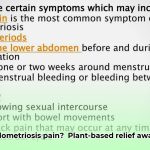Dealing with annoying whiteheads? You’re not alone! This comprehensive guide provides dermatologist-approved insights to help you understand the causes, effective treatments, and preventative measures for achieving clear skin. From simple home remedies to advanced professional treatments, we’ll explore every aspect of managing whiteheads, including the often-overlooked emotional impact. Get ready to learn how to attain a healthier complexion and boost your confidence!
Understanding Acne Whiteheads: A Comprehensive Overview
Let’s delve into the specifics of whiteheads – those small, stubborn bumps that can be a source of frustration. Understanding their nature and causes is the crucial first step towards achieving clearer skin. What distinguishes whiteheads from other types of acne?
Defining Acne Whiteheads: Unveiling the Skin Bumps
Picture your skin as a landscape of tiny pores, each containing a hair follicle. These pores can become congested with sebum (oil), dead skin cells, and bacteria. When this blockage occurs beneath the skin’s surface, it forms a whitehead, also known as a closed comedone. Unlike blackheads, which are open and exposed to air, whiteheads remain closed, giving them their characteristic white appearance. It’s essentially a miniature traffic jam of debris trapped beneath your skin!
What Causes Acne Whiteheads? Pinpointing the Root Causes
Several factors can contribute to clogged pores.
- Excess Sebum Production: Overactive oil glands, especially during puberty or hormonal fluctuations, produce excess sebum, increasing the likelihood of pore congestion.
- Dead Skin Cell Accumulation: Skin cells naturally shed, but sometimes they accumulate and contribute to pore blockages.
- P. acnes Bacteria: The bacterium Cutibacterium acnes (formerly Propionibacterium acnes) can trigger inflammation within blocked pores, leading to redness and discomfort.
- Hormonal Changes: Fluctuations in hormone levels, such as those experienced during menstruation, pregnancy, or as a result of certain medications, can impact sebum production and increase acne risk.
- Genetics: A predisposition to acne can be inherited. If your parents struggled with acne, you may be more likely to experience it as well.
- Cosmetics and Skincare Products: Certain makeup and skincare products can clog pores, particularly those that are oil-based or comedogenic.
- Diet: Some studies suggest a link between diet and acne, with high-glycemic foods and dairy potentially exacerbating breakouts in some individuals. However, more research is needed.
Effective Treatment Options for Acne Whiteheads: Expert-Backed Solutions
Fortunately, numerous effective treatments exist for managing whiteheads, ranging from simple at-home remedies to advanced professional procedures. What are the most effective dermatologist-recommended treatments for whiteheads?
Over-the-Counter (OTC) Treatments: Your Initial Strategy
For mild cases of whiteheads, these readily accessible options can often produce significant improvements:
- Benzoyl Peroxide: A potent antibacterial agent that targets C. acnes bacteria, reducing inflammation and clearing blemishes. Begin with a low concentration (2.5%) to assess your skin’s tolerance, as dryness and flaking may occur initially.
- Salicylic Acid: An effective exfoliant that promotes the shedding of dead skin cells and unclogs pores. It dissolves the bonds between dead skin cells, preventing future blockages. Choose a concentration appropriate for your skin type.
- Topical Retinoids (Adapalene): Vitamin A derivatives that accelerate cell turnover, encouraging the shedding of old skin cells and preventing clogged pores. Start with a low frequency of application, as retinoids can initially cause dryness and irritation.
- Azelaic Acid: This naturally occurring acid possesses antibacterial and anti-inflammatory properties, making it an effective treatment for acne and hyperpigmentation.
Professional Treatments: Escalating Your Skincare Regimen
If OTC treatments don’t yield sufficient improvement after several weeks, or if your whiteheads are severe, persistent, or painful, consult a dermatologist. They can provide more advanced treatments, including:
- Chemical Peels: Professional-grade exfoliating treatments that remove the outer layer of skin, revealing smoother, clearer skin underneath.
- Microdermabrasion: A procedure that gently exfoliates the skin’s surface using tiny crystals, helping to unclog pores and improve skin texture.
- Comedone Extraction: A dermatologist or trained aesthetician can manually extract whiteheads using specialized tools. This should not be attempted at home, as improper technique can lead to inflammation and scarring.
- Laser Therapy: Certain laser treatments can target oil glands and reduce sebum production, helping to prevent future breakouts.
- Prescription Medications: A dermatologist may prescribe stronger retinoids, topical or oral antibiotics, or other medications tailored to your specific skin type and the severity of your acne.
- Oral Contraceptives: For women, certain oral contraceptives can help regulate hormones and reduce acne breakouts.
Preventing Future Breakouts: Establishing a Proactive Skincare Routine
Preventing whiteheads requires a consistent skincare routine and healthy lifestyle habits. What are the key elements of a successful acne-prevention skincare routine?
-
Gentle Cleansing: Wash your face twice daily with a mild, non-comedogenic cleanser. Avoid harsh scrubbing, which can irritate your skin. Use lukewarm water and gently pat your skin dry.
-
Regular Exfoliation: Incorporate a gentle exfoliant, such as a salicylic acid or glycolic acid-based product, into your routine 1-2 times per week to remove dead skin cells and prevent clogged pores.
-
Moisturize: Even oily skin requires moisturization. Choose a lightweight, oil-free, non-comedogenic moisturizer to keep your skin hydrated without clogging pores.
-
Sun Protection: Apply a broad-spectrum sunscreen with an SPF of 30 or higher daily to protect your skin from sun damage. Choose an oil-free, non-comedogenic formula to avoid breakouts.
-
Avoid Touching Your Face: Refrain from touching your face throughout the day to prevent the transfer of dirt, oil, and bacteria to your pores.
-
Hands Off!: Resist the urge to squeeze or pick at whiteheads, as this can worsen inflammation, lead to scarring, and increase the risk of infection.
-
Makeup Choices: Use oil-free, non-comedogenic makeup products. Remove makeup thoroughly before bed using a gentle makeup remover and cleanser. Clean your makeup brushes regularly to prevent bacteria buildup.
-
Healthy Diet: While the link between diet and acne is still being researched, some studies suggest that limiting sugary and processed foods and incorporating more fruits, vegetables, and whole grains into your diet may help reduce breakouts.
When to Seek Dermatological Expertise: Recognizing When Professional Help Is Needed
While many cases of whiteheads respond well to home treatments, it’s essential to consult a dermatologist if:
- Your whiteheads are persistent, severe, or painful.
- You notice significant redness, swelling, or pus.
- You’re developing acne scars.
- Over-the-counter remedies are ineffective.
- Acne is affecting your self-esteem or mental health.
Addressing the Emotional Impact of Acne: Acknowledging the Mental Health Aspect
Acne can be a frustrating condition that affects self-esteem and mental well-being. It’s normal to feel self-conscious or anxious about your skin. Remember that you’re not alone, and many people experience acne at some point in their lives. Talking to a trusted friend, family member, therapist, or support group can provide valuable emotional support. Practice self-care, focus on a balanced lifestyle, and remember that your worth is not defined by your skin.
Acne Whitehead Treatment Options: A Comparative Overview
| Treatment | Pros | Cons |
|---|---|---|
| Benzoyl Peroxide | Kills bacteria, reduces inflammation | Can cause dryness, irritation, bleaching of fabrics |
| Salicylic Acid | Exfoliates, unclogs pores | Can cause irritation, dryness |
| Topical Retinoids | Unclogs pores, reduces inflammation, increases cell turnover | Can cause initial dryness, irritation, sun sensitivity |
| Azelaic Acid | Reduces inflammation and hyperpigmentation; antibacterial | Can cause mild irritation |
| Chemical Peels | Effective for moderate acne, improves skin texture | Can cause redness, peeling, downtime, sun sensitivity |
| Microdermabrasion | Improves skin texture, unclogs pores | May not be suitable for all skin types, temporary redness |
| Comedone Extraction | Provides immediate relief | Can cause inflammation if not performed correctly, risk of scarring |
| Prescription Meds | Targeted treatment for severe acne | Potential side effects vary by medication, requires dermatologist visit |
Disclaimer: This information is intended for general knowledge and informational purposes only, and does not constitute medical advice. It is essential to consult with a qualified healthcare professional or dermatologist for any health concerns or before making any decisions related to your health or treatment. Individual results may vary.*
How to Prevent Whiteheads Naturally: Holistic Approaches
Key Takeaways:
- Gentle cleansing is crucial; avoid harsh scrubbing.
- Consistent skincare routines are essential.
- Some natural ingredients show promise but lack extensive scientific support.
- Over-the-counter (OTC) treatments are evidence-based but may have side effects.
- Plant-based Diet Colitis Remission: Success Stories - December 18, 2025
- Plant Based Diet Breast Cancer: Research-Based Benefits - December 16, 2025
- Plant-Based Diet Ulcerative Colitis Remission: Proven Benefits - December 15, 2025










